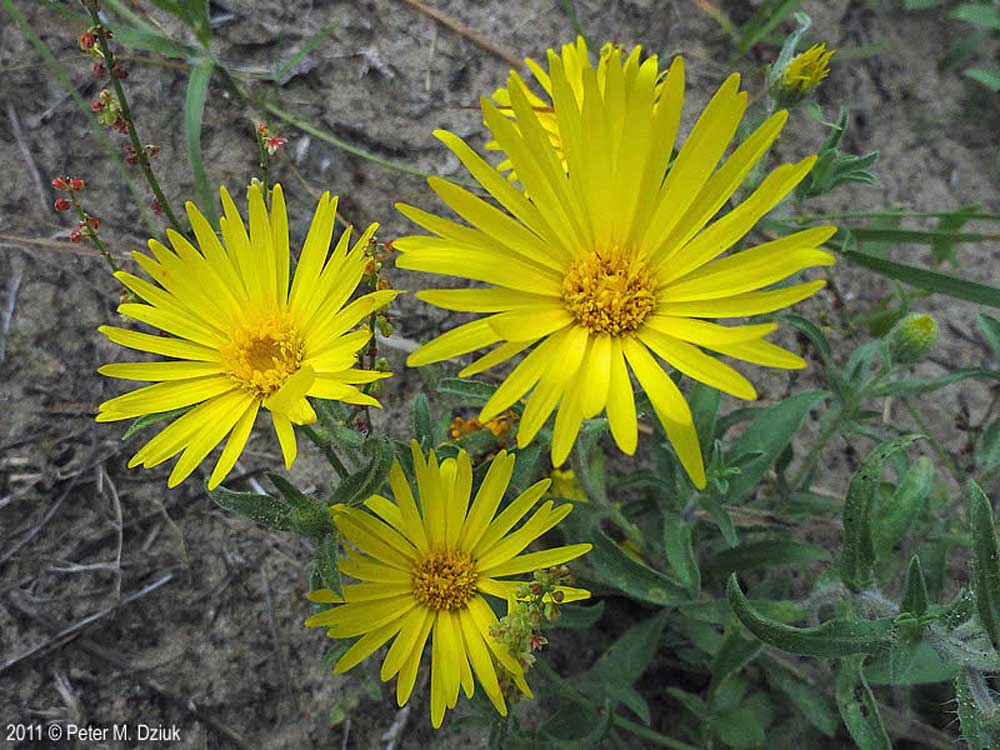Gardening column: Fall planting can satisfy the gardening itch
Published 12:30 am Sunday, October 3, 2021

- Hairy Golden Aster, Heterothica villosa is a perennial that is drought tolerant, and pollinator friendly and a grasslands native hardy.
According to the calendar, we should be winding down, cleaning up and putting away. Not so if you have some planting ideas in mind.
I lost a large bed of flowering annuals to, I suspect, “Bambi,” who visits most every day. I decided it is time for a switch to adding more perennials and to fall planting. The fall planting came from the realization that in the spring I am behind before I even get started. My delight is in the seed germination process and that is where my energy goes from March through May.
I have read that over 70% of plant root growth occurs in late summer and early fall. Stem and leaf growth is limited to allow root growth to increase and store the nutrients for the winter.
After justifying my reasons for fall planting I did a little shopping.
The first two were plants that have been on my list for years.
Oregon sunshine, Eriophyllum lanatum, is a compact perennial that attracts pollinators. It is low growing with bright yellow blooms that resemble daisy-like flowers. Bloom time is from spring through summer, the foliage is grey-green. The size at maturity is 1-3 inches high, 1-2 inches wide. The water requirement is low.
Hairy golden aster, heterothica villosa is a perennial that is drought tolerant, pollinator friendly and a grasslands native hardy in Zone 3. Daisy -like blooms are lemon to golden yellow. They like sun to light shade and bloom from midsummer through fall. Cut down after a hard frost, but allow a few stems to self-seed and feed birds. Both Oregon sunshine and hairy golden aster can be invasive. The two selections will solve a problem area I have been wanting to plant.
Now to rethinking Bambi’s smorgasbord, or lack of one, in 2022.
The criteria for new perennial selections will be deer-resistant, pollinator friendly and low water usage.
Salvia’s are on the list. In 1998 the original salvia trials contained 15 varieties. In 2016 40 additional varieties were entered in the trial process at the Chicago Botanic Garden, which is a minimum process of four years. You can see they are becoming more popular.
Some of the new varieties that are rated for Zone 4 include “Ave Marie,” a bright fuchsia, “blueberry beret,” a dwarf with violet-blue flowers, “sensation sky blue” — the name is a bit of a misnomer as the flowers are a medium purple -blue.
I did do something daring. I bought a “windwalker” royal red, bred in Colorado, 48 inches tall, crowned with rosy red flowers and a long bloom period. Rated for Zone 5, which is the daring element for me. I usually don’t grow perennials that are rated above a Zone 4. The trial comment included the key to success is providing good drainage, both in summer and winter. With our soil, I don’t think that will be a problem.
“Windwalker” is currently in its nursery container on a walkway between the house and greenhouse. One day I saw a hummingbird happily having breakfast at one of the blooms. That is exactly what brings me joy.
Alliums have the reputation of bridging the gap between spring and early summer perennials. I decided this would be a good fall to increase the allium plantings. I was lucky enough to find three varieties locally: “purple sensation,” also called Persian onion; “star of Persia,” also marketed as “Christophii;” and “globemaster.”
Alliums have many attributes. They have showy complex flower heads that attract bees, butterflies and hummingbirds. They are great for cutting and as a dried eye-catching flower head tucked in a basket of mixed evergreens as an outdoor winter container arrangement.
“Purple sensation” is one of the earliest alliums to bloom. The flower heads are 4-inch balls on 2- to 3 -foot stalks.
“Christophii” displays 8- 10-inch flower balls on14- to 18-inch stalks.
“Globemaster” a 1971 cross, has been a long-lasting favorite in the bulb catalogs.
The 10-inch flower heads are dense atop thick 24- to 36-inch stems.
Use bulb food at the bottom of the planting hole and water well after planting. Mulch after the ground has frozen solid. Mulching too early will trap heat and possibly cause premature root growth, which you don’t want for bulbs.
Free webinar class: Wednesday, Oct. 6, 7 p.m. offered by OSU Master Gardeners. Tips on end-of-season preparations for vegetable garden and landscape. Plus tips on how to prevent winter damage. Q&A session to follow. Register for the class at tinyurl.com/3w2x9p8f. Registration is required for this free class.








